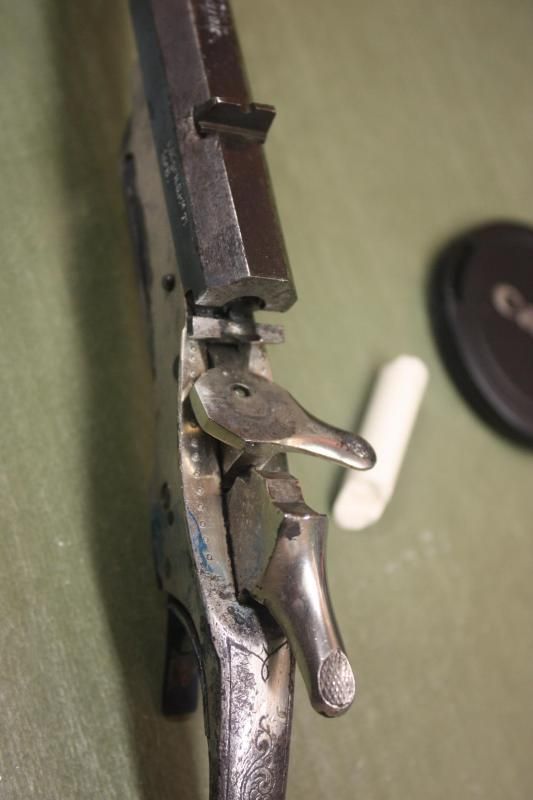I would like to find out any information at all about this pistol... including what any or all of the proofmarks mean. I am trying to determine approximately how old it is especially...
It is a Krieghoff single shot, I believe it is a .22 short, and has a single set trigger...
 The breech door and chamber
The breech door and chamber

On the bottom of the barrel, an anchor
 Marked on right side of receiver a U and B with crowns over them
Marked on right side of receiver a U and B with crowns over them
 Marked on left side of barrel `0.05 grNGPM 71`
Marked on left side of barrel `0.05 grNGPM 71`
 Marked `Krieghoff Suhl`
Marked `Krieghoff Suhl`

Has anyone ever seen anything like this or have any useful info about it?
Thanks -Bear
It is a Krieghoff single shot, I believe it is a .22 short, and has a single set trigger...
 The breech door and chamber
The breech door and chamber
On the bottom of the barrel, an anchor
 Marked on right side of receiver a U and B with crowns over them
Marked on right side of receiver a U and B with crowns over them Marked on left side of barrel `0.05 grNGPM 71`
Marked on left side of barrel `0.05 grNGPM 71` Marked `Krieghoff Suhl`
Marked `Krieghoff Suhl`
Has anyone ever seen anything like this or have any useful info about it?
Thanks -Bear
